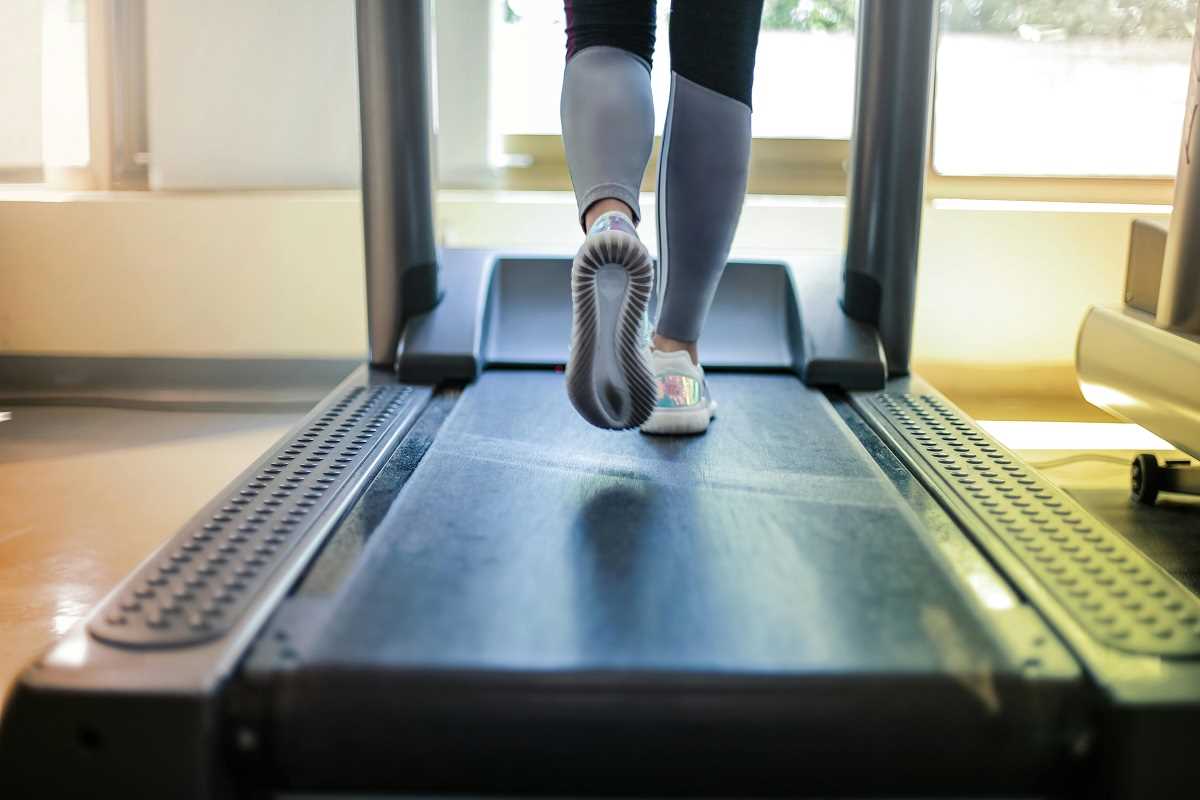Walking might seem like a humble, unassuming activity—but don’t underestimate its power to transform your life. Setting a daily goal to walk 10,000 steps has become a popular benchmark for fitness enthusiasts worldwide, and for good reason. This simple habit can lead to better health, improved mood, and a greater sense of overall well-being.
But what makes the goal of 10,000 steps so significant? Is it achievable for most people? And how can you realistically incorporate more walking into your day? Here’s a deep-dive into why this practice is so beneficial and how you can make it a rewarding part of your life.
Why 10,000 Steps?
The concept of walking 10,000 steps a day originated in Japan in the 1960s, tied to the promotion of a pedometer named manpo-kei, which translates to "10,000 steps meter." This wasn’t based on scientific evidence at the time but was marketed as a practical fitness goal for the average adult. Decades later, research has validated the benefits of walking close to or surpassing this target.
Several studies suggest that walking 7,000 to 10,000 steps daily is associated with lower mortality rates, a healthier heart, and a better quality of life. While there’s nothing magical about hitting 10,000 precisely, it serves as a clear, motivating goal for those looking to lead a more active lifestyle in our increasingly sedentary world.
Physical health is just one piece of the puzzle, though. Walking can also have a profound impact on mental and emotional well-being. Plus, it’s an incredibly accessible form of exercise. You don’t need expensive equipment or gym memberships to reap its rewards.
The Physical Benefits of 10,000 Steps Daily
Walking may not look like an intense workout, but its positive impact on your body is remarkable. Here are several ways walking can boost your physical health:
1. Boosts Cardiovascular Health
Walking is one of the best exercises for your heart. When you walk, your heart pumps more blood, oxygen reaches your muscles and organs efficiently, and your circulatory system gets a helpful boost. Regularly achieving 10,000 steps a day can lower the risk of cardiovascular diseases like high blood pressure, heart attacks, and strokes.
For instance, when you walk briskly for even just 30 minutes, you activate aerobic activity that strengthens your heart muscles. If you spread those steps throughout the day, as many do, it keeps your body consistently moving, which is excellent for overall cardiovascular health.
Small changes, such as taking a short walk after meals or pacing while on a phone call, may seem trivial, but they promote heart health over time. Pair these actions with intentional brisk walking, and you’ve got a heart-healthy routine.
2. Encourages Weight Management
Burning calories doesn’t always require grueling workouts. Walking 10,000 steps can result in burning 300 to 500 calories per day, depending on factors like your weight, walking pace, and terrain. This calorie deficit, when combined with mindful eating habits, aids weight loss and prevents weight gain over time.
For example, if you burn approximately 350 calories daily by walking, you’re burning about 2,450 calories weekly. That adds up to potentially significant results without needing high-intensity exercises. Walking is also particularly helpful for those transitioning into fitness because it’s low impact and gentle on your joints compared to activities like running.
The best part? You don’t need to set aside hours to dedicate to walking. Just integrate it into your lifestyle. Walk your child to school instead of driving, or incorporate walking meetings at work.
3. Builds Lower Body Strength
Though walking may seem like a straightforward activity, it engages a variety of muscles, especially your calves, hamstrings, quadriceps, and glutes. Walking works all these muscles in unison, leading to improved strength and endurance in your lower body.
Adding extra challenges to your walking routine can deepen these benefits. For instance, walking uphill engages your glutes and calves more intensely, while taking stairs adds an additional layer of resistance. You can even carry lightweight dumbbells for a greater challenge, turning your walk into a full-body workout.
4. Enhances Bone Density
Bone health becomes increasingly important as we age. Walking is a weight-bearing exercise, meaning it helps your bones combat the effects of aging. It stimulates bone growth and slows down deterioration, reducing your risk of osteoporosis. While running or lifting weights also build bone density, they come with a higher risk of injury, especially for beginners. Walking provides a safer, lower-impact way to maintain strong bones.
Picture someone in their 60s taking daily walks. Over the years, this habit pays dividends by keeping their bones resilient, reducing the risk of fractures, and allowing them to maintain an active lifestyle well into their golden years.
Mental and Emotional Benefits of Walking
The benefits of a daily 10,000-step goal extend beyond physical health. Walking can work wonders for your mental and emotional well-being.
5. Reduces Stress and Anxiety
Walking gives you more than an opportunity to move your body; it also provides space to clear your mind. Cortisol, the stress hormone, decreases when you engage in physical activity like walking. Combine this with exposure to nature, such as a stroll through a park, and you’ll likely experience even greater stress relief.
Many people find walking therapeutic. Whether taking a solo stroll or walking with a companion, there’s something naturally calming about the rhythmic motion of putting one foot in front of the other.
6. Boosts Creativity and Focus
Ever notice how your mind feels sharper after a walk? That’s no coincidence. Walking encourages blood flow to the brain, which improves cognitive function. Studies have shown that walking boosts creativity and problem-solving abilities, making it a valuable activity for those working on creative projects or tackling challenges.
Some of the world’s most successful innovators have relied on walking to spark ideas. For instance, Steve Jobs and other notable figures were known for holding “walking meetings” instead of sitting in a room. Even if you step away for just a quick walk around the block, you may find yourself returning to tasks with improved focus and a clearer mind.
7. Improves Mood
Walking encourages the release of endorphins, our body’s natural feel-good hormones. People who walk daily often report less irritability and greater overall happiness. For those dealing with mild depression or mood swings, walking can act as a powerful tool to lift their spirits.
Walking with others can multiply the emotional benefits. Social connections reduce loneliness and create feelings of belonging, both of which are powerful determinants of long-term happiness.
Long-Term Health Advantages
Building a daily walking habit doesn’t just benefit how you feel today; it contributes to your health years down the road.
8. Prevents Chronic Diseases
Walking isn’t a cure-all, but it does lower the risks of several chronic conditions tied to sedentary lifestyles. For example, regular walkers have a lower chance of developing type 2 diabetes, as walking improves insulin sensitivity. It can also reduce inflammation, a common contributor to conditions such as hypertension and certain cancers.
9. Enhances Longevity
If there’s one thing walking can’t be praised enough for, it’s helping people live longer. A study by JAMA Internal Medicine found that individuals who walked 7,000 steps per day had a 50-70% lower risk of early death than their less active counterparts. Increasing that number to 10,000 steps only heightens the potential for a longer, healthier life.
Tips for Reaching 10,000 Steps a Day
If 10,000 steps sound daunting, don’t worry. With a few practical strategies, you can weave walking into your day more effortlessly.
- Start Small: Start tracking your daily steps. If you’re averaging 4,000 steps, aim to increase to 5,000-6,000. Gradual progress helps avoid burnout.
- Choose Active Commutes: If possible, ditch the car for local errands. Walk to the store, library, or café whenever time allows.
- Take Movement Breaks: Work at a desk? Set alarms every hour to stand up and walk for a few minutes. This helps boost both circulation and productivity.
- Walk with Friends or Family: Make walks part of your bonding time. It’s easier to stay motivated when you’re sharing the experience.
- Track Your Progress: Fitness trackers and step-counting apps can make your progress tangible, increasing your motivation.
- Mix It Up: Get creative to avoid monotony. Explore new parks, try audio fitness programs, or challenge yourself with daily walking goals.
Walking 10,000 steps a day isn’t just a fitness gimmick; it’s a life-changing habit. From improving physical health and mental clarity to reducing the risks of chronic illness, walking is one of the simplest, most effective investments in your well-being.
 (Image via
(Image via





